From the mansion, Mark next drove us a short distance, across the field behind the Gaston Mansion, to the hacienda’s unique chapel. Built during the hacienda days of the 1960s, it is probably the most native-looking of all Philippine churches.
Built by secular priest Msgr. Guillermo “Gigi” Gaston for the farm’s workers, its farming motif is reflected in its facade made mainly from various farm implements including plows, mortar (candle holders) and pestles (a holy water container), all indigenous to Hacienda Rosalia, as well as margaha sand and rocks from the nearby seashore. The chapel’s benches were each made with slabs of hardwood by families who attended the mass.
Its tall roof is a stylized wooden salakot (headgear) and the walls are made of artistically-linked discarded carabao cartwheels, an idea thought of by Msgr. Gaston who knew that the farm workers and their families could easily relate to this simple but widely used object in the farms where they worked.
For him, the cartwheel also symbolizes the Holy Trinity with God the Father as the center of the wheel; Jesus Christ as the spokes surrounding it, leading the people towards God; and the the Holy Spirit as the outer rim who ensures that the people don’t get lost on their way towards the center.
A huge, centuries-old boulder serves as the altar and the wall behind it is made of native stone and punctured by 3 cartwheel-shaped stained glass windows (representing God the Father, God the Son and God the Holy Spirit) with broken pieces of glass bottles (wine, milk and soda) in different colors, giving the altar a more creative and lively look. Boulders were also used as the podium top and seats for the sacristans.
The sliding doors feature mats of 128 panels portraying Biblical events and the usual Christ on the cross is modified by a farmer crucified on a cartwheel. Masses, attended by hacienda farm workers and their families, are still being held in the chapel. The chapel, also open to guests and tourists who visit the town, is also a popular venue for weddings.
Chapel of the Cartwheels: Hacienda Rosalia, Manapla, Negros Occidental.
How to Get There: Manapla is located 44.7 kms. (a 1-hour drive) northeast of Bacolod City.

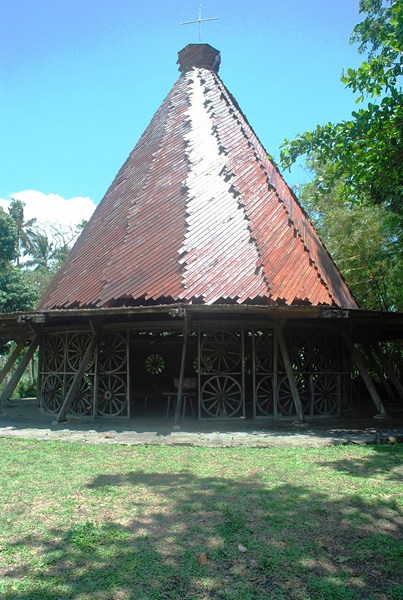
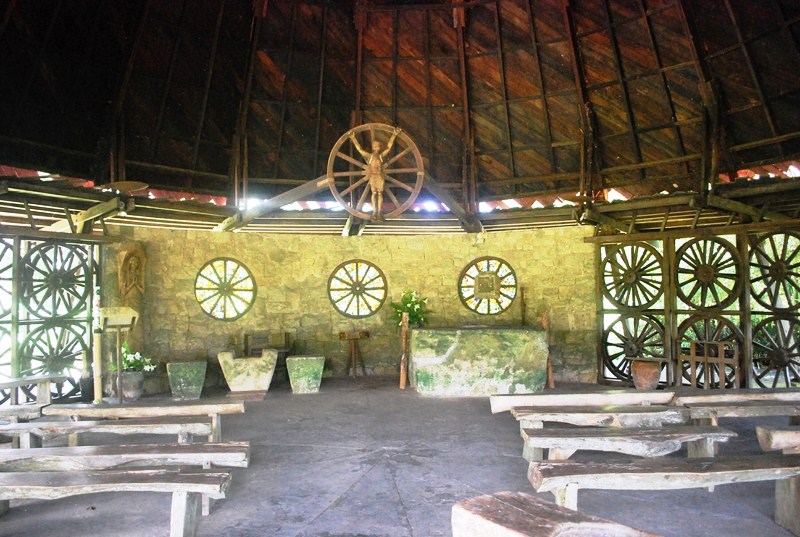
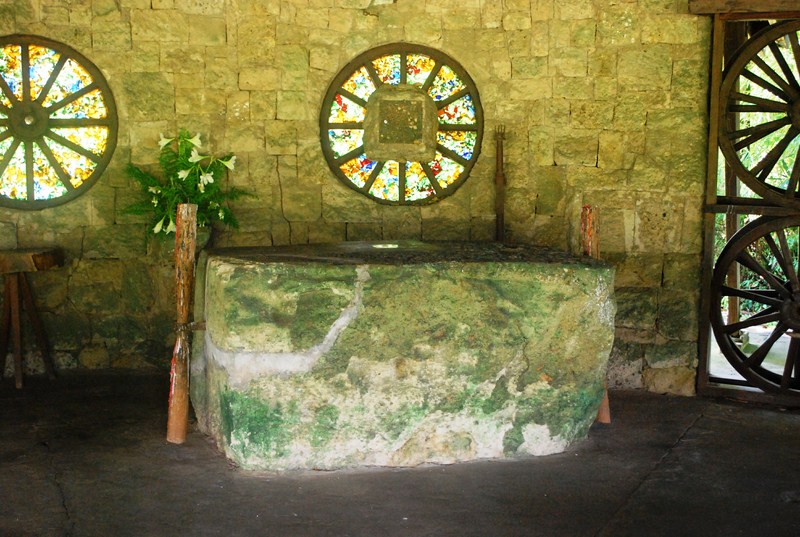
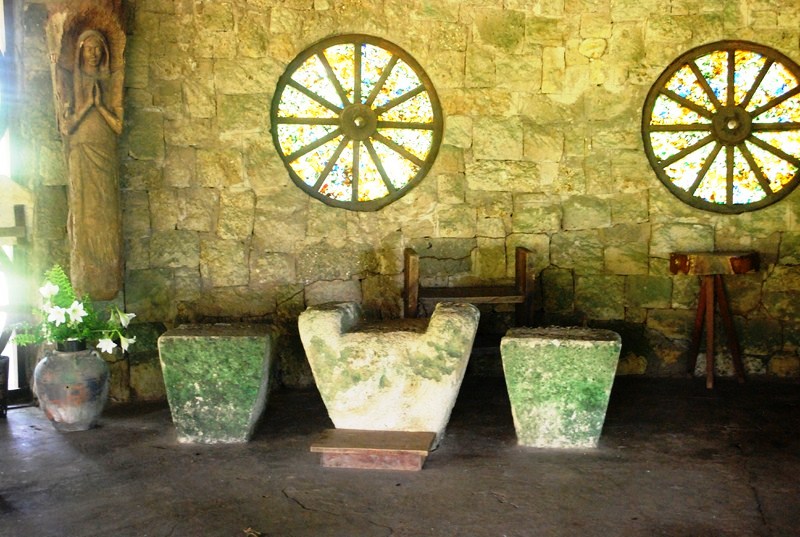
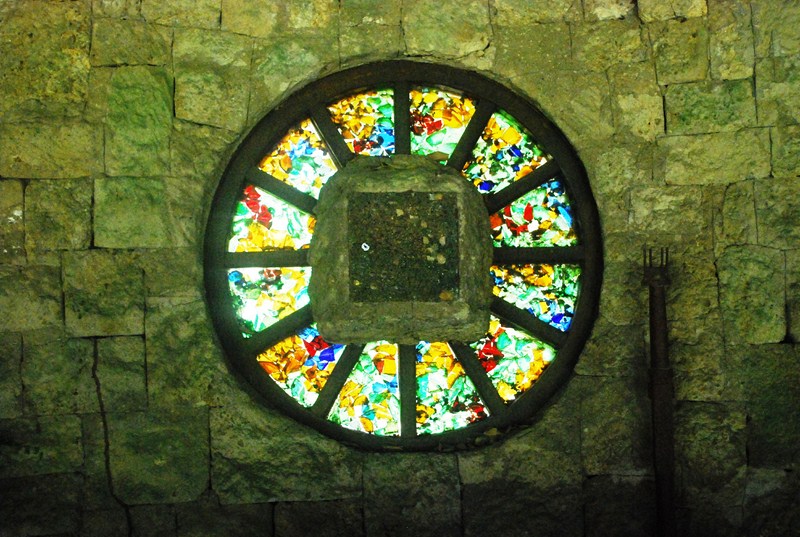
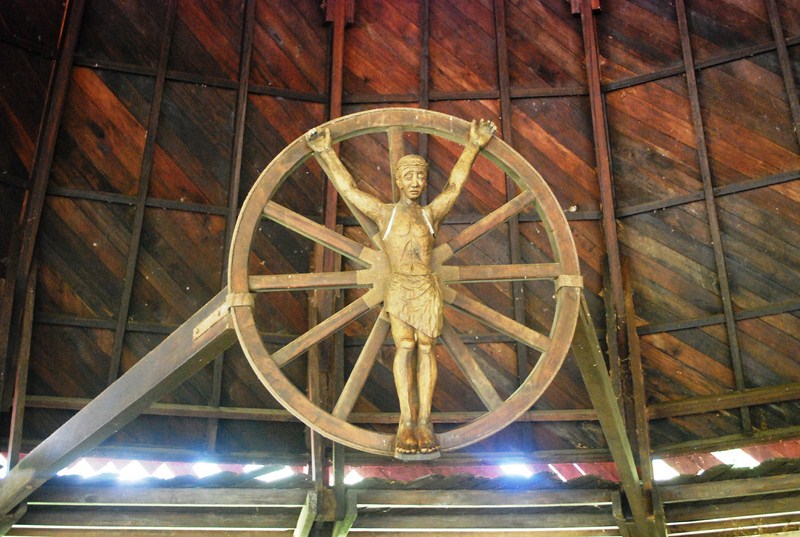
Pingback: References – historical structures in the philippines